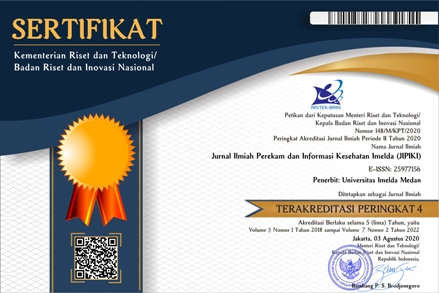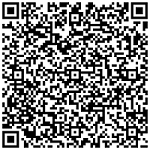Keselamatan dan Kesehatan Kerja (K3) Petugas Rekam Medis Ruang Filling di Rumah Sakit Bhayangkara Tingkat III Banjarmasin
DOI:
https://doi.org/10.52943/jipiki.v9i2.1673Kata Kunci:
Occupational Safety and Health, Medical Records, FillingAbstrak
The medical record filling unit has an important role in maintaining medical records, especially in terms of storing and protecting medical records. Storing medical records can run well if supporting facilities for storage activities are available and the work environment is supportive so that it makes it easier to retrieve, provide and store medical records. taking and storing medical record documents, the filling officer was hit by a medical record document, scratched by a medical record document, a medical record shelf, a filling officer fell while taking a tall medical record document. So that it is researched and known about the implementation of occupational safety and health (K3) based on human resource factors and work environment factors at the Bhayangkara Level III Hospital, Banjarmasin. The type of research in this research is qualitative with a descriptive approach. The subjects of this research were 3 people, namely the Head of the Medical Records Unit as informant 1, the outpatient filling officer as informant 2 and the inpatient filling officer as informant 3. This research instrument used interview and observation guidelines. The results of this research are that the implementation of occupational safety and health (K3) at the Bhayangkara Level III Hospital in Banjarmasin has not gone well based on human resource factors in the use of personal protective equipment (PPE), most of them use masks, based on work environment factors in the lighting outpatient filling room. and the distance between shelves does not meet the standards, in the inpatient filling room the temperature, humidity, lighting and distance between shelves do not meet the standards. So it is necessary to socialize the implementation of the use of PPE and periodically check infrastructure to meet filling room standards.
Unduhan
Referensi
[2]. Susanto, E., & dkk. Keselamatan dan Kesehatan Kerja Pada Penyimpanan Rekam Medis di Instalasi Rekam Medis. Jurnal Rekam Medis dan Informasi Kesehatan. Vol. 2 34-38. 2019.
[3]. Suardi, R. P., & Budi, S. C.. Perancangan Ulang Ruang Filing Berdasarkan Ilmu Ergonomi Rumah Sakit Panti Rini Kalasan. Jurnal Manajemen Informasi Kesehatan Indonesia. Vol. 1. 33-38. 2013.
[4]. Sugiyono.Metode Penelitian Kuantitatif, Kualitatif dan R&D. Versi 1 . Bandung: Alfabeta. 2019.
[5]. Moleong Lexy J. Metodologi Penelitian Kualitatif. Bandung: Remaja Rosdakarya. 2005
[6]. Sugiyono.Metode Penelitian Kuantitatif, Kualitatif dan R&D. Versi 2 . Bandung: Alfabeta. 2019.
[7]. Keputusan Menteri Kesehatan No. 1087/MENKES/VII/2010 tentang Standar Kesehatan dan Keselamatan Kerja (K3) di Rumah Sakit.
[8]. KARS. Standar Nasional Akreditasi Rumah Sakit Edisi 1. 1st edn, Standar Akreditasi Rumah Sakit. 1st edn. Jakarta. 2012.
[9]. Rustiyanto, E., & Rahayu, W. A. Manajemen Filing Dokumen Rekam Medis dan Informasi Kesehatan. Yogyakarta: Politeknik Kesehatan Permata Indonesia. 2011.
[10]. Menteri Kesehatan Republik Indonesia. Keputusan Menteri Kesehatan Republik Indonesia Nomor 1405. Tahun 2002. tentang Persyaratan Kesehatan Lingkungan Kerja Perkantoran dan Industri.2002.
[11]. Irmawati. Kesehatan dan Keselamatan Kerja (K3) di Bagian Filing. Jurnal Manajemen Informasi Kesehatan Indonesia. Vol.7 34-38. 2019.
[12]. Putri, A. P.. Analisis Tata Ruang Tempat Penyimpanan Dokumen Rekam Medis Pasien Ditinjau dari Aspek Antropometri Petugas Rekam Medis. Jurnal Manajemen Informasi Kesehatan Indonesia. Vol. 2. 41-49. 2014.











